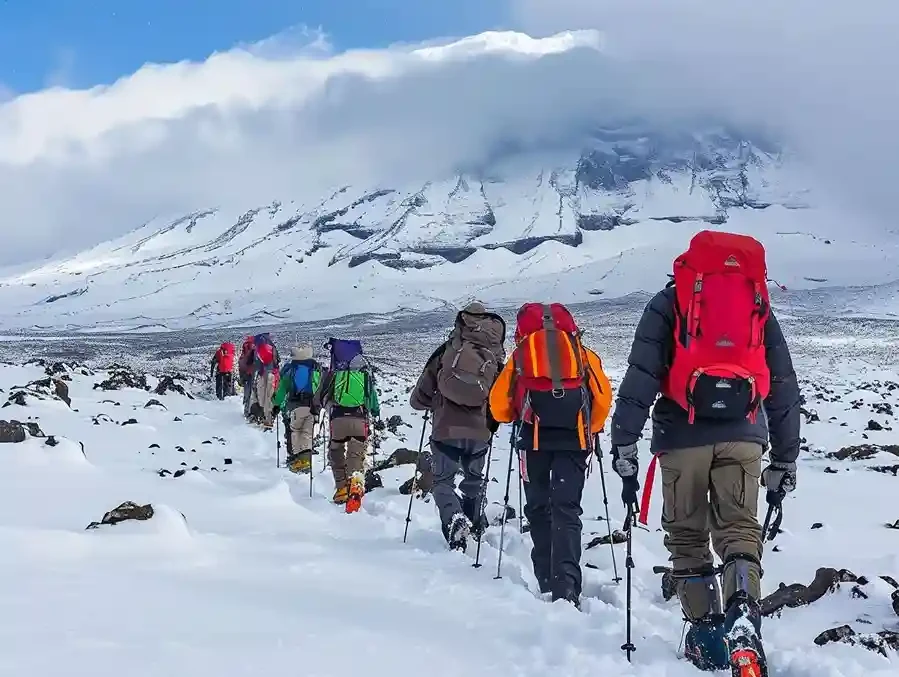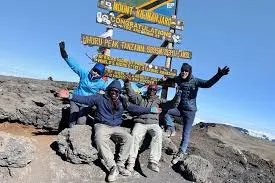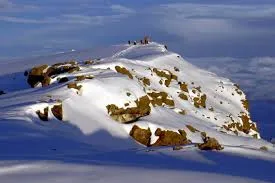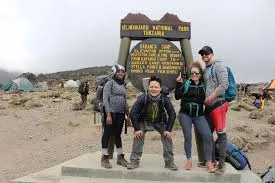Best Time to Climb Mount Kilimanjaro | Kilimanjaro Trekking Guide
The best time to climb Mount Kilimanjaro is during the dry seasons, from late June to October and late December to February, when the trails are clearer and the weather is more predictable. Rain is less frequent, which improves hiking conditions and increases your chances of summiting successfully. Temperatures vary with altitude, so be prepared for chilly nights and warmer days. This is a complete planning guide to help you choose the ideal season and prepare for a successful 6–9 day Kilimanjaro trek with Capable Africa Tours.
Plan Your Kilimanjaro Trek Now
Understanding Kilimanjaro’s Climbing Seasons
Mount Kilimanjaro, standing at 5,895 meters (19,341 feet), is a year-round climbing destination, but the best time to climb depends on weather, crowd levels, and your preferences for scenery or solitude. Capable Africa Tours recommends the dry seasons—January to March and June to October—for optimal conditions, with temperatures ranging from 80°F at the base to 0°F at the summit. Below is a detailed breakdown of Kilimanjaro’s seasons to help you choose the perfect time for your trek.
Dry Seasons: January–March and June–October
- January–March (Warm Dry Season): Warm temperatures (70–80°F at lower elevations), clear skies, and minimal rain make this a peak climbing period. February is the coldest summit month (0–10°F), requiring thermal layers. Expect moderate crowds, especially on popular routes like Machame and Marangu.
- June–October (Cool Dry Season): Cooler temperatures (60–75°F at the base) and dry trails offer excellent visibility for views of Kibo and Mawenzi peaks. September and October are less crowded, ideal for a quieter trek. Summit nights can dip to 5–15°F.
Wet Seasons: April–May and November
- April–May (Long Rains): Heavy rainfall (up to 15 inches/month) creates muddy trails and low visibility, especially in rainforest zones. Fewer climbers mean more solitude, but waterproof gear and experienced guides are critical.
- November (Short Rains): Lighter rainfall (5–8 inches/month) than April–May, with occasional clear days. Trails can be slippery, but the shoulder season offers fewer crowds and lush scenery in lower zones.
Seasonal Weather Data
| Season | Months | Base Temp (°F) | Summit Temp (°F) | Rainfall (in/month) | Crowd Level |
|---|---|---|---|---|---|
| Warm Dry | January–March | 70–80 | 0–10 | 1–3 | Moderate |
| Long Rains | April–May | 65–75 | 5–15 | 10–15 | Low |
| Cool Dry | June–October | 60–75 | 5–15 | 1–2 | High (June–Aug), Moderate (Sep–Oct) |
| Short Rains | November | 65–75 | 5–15 | 5–8 | Low |
Why Timing Your Kilimanjaro Climb Matters
Choosing the right time to climb Mount Kilimanjaro significantly impacts your comfort, safety, and summit success rate. Dry seasons offer stable weather, safer trails, and better visibility, increasing your chances of reaching Uhuru Peak (98% success rate with Capable Africa Tours). Wet seasons, while challenging, provide unique opportunities for experienced climbers seeking solitude and lush landscapes. Here’s why timing matters and how Capable Africa Tours ensures a successful climb.
Key Benefits of Optimal Timing
- Safety: Dry trails reduce risks of slips and falls, especially on steep sections like the Barranco Wall.
- Comfort: Clear skies and moderate temperatures enhance trekking enjoyment across Kilimanjaro’s five climate zones.
- Success Rate: Longer, drier routes like Lemosho (7–8 days) improve acclimatization, boosting summit success to 95%.
- Scenery: Dry seasons offer unobstructed views of Kilimanjaro’s glaciers and volcanic landscapes.
Best Routes for Your Kilimanjaro Climb
The best time to climb influences your route choice, as some routes handle wet conditions better than others. Capable Africa Tours offers customizable itineraries across all major routes, each with unique features. Below is a comparison to help you decide.
| Route | Duration (Days) | Difficulty | Success Rate (%) | Best Season | Features |
|---|---|---|---|---|---|
| Marangu | 5–6 | Moderate | 85 | Jan–Mar, Jun–Oct | Hut accommodations, gradual slopes, beginner-friendly |
| Machame | 6–7 | Challenging | 90 | Jan–Mar, Jun–Oct | Scenic, diverse landscapes, popular “Whiskey Route” |
| Lemosho | 7–8 | Challenging | 95 | Jan–Mar, Jun–Oct | Longer acclimatization, remote, stunning views |
| Rongai | 6–7 | Moderate | 88 | Nov, Apr–May | Northern approach, quieter, good for wet seasons |
Visualize Your Kilimanjaro Trek
Join Capable Africa Tours for an unforgettable Kilimanjaro adventure. Watch this video to explore the routes, seasons, and breathtaking views awaiting you.
Tips for Choosing the Best Time to Climb
Selecting the ideal time for your Kilimanjaro climb involves balancing weather, crowds, and personal goals. Capable Africa Tours shares expert tips to help you plan a successful trek.
- Prioritize Dry Seasons: January–March and June–October offer the best weather for safety and summit success (95% with proper acclimatization).
- Consider Shoulder Months: Late March or early November provide fewer crowds and milder weather, ideal for solitude seekers.
- Choose Longer Routes: Routes like Lemosho (7–8 days) improve acclimatization, increasing summit chances by 10–15% compared to shorter routes.
- Prepare for Cold: Pack a -15°C sleeping bag and 800-fill down jacket for summit nights, especially in February or July.
- Book Early: Popular dry season slots fill up 6–12 months in advance. Secure your spot with Capable Africa Tours for a seamless experience.
Ready to Climb Mount Kilimanjaro?
Climb Kilimanjaro with confidence alongside Capable Africa Tours. Our expert guides, tailored itineraries, and 98% summit success rate ensure an unforgettable adventure to Uhuru Peak.
- 98% summit success rate with expert guides
- Eco-friendly treks supporting local communities
- Flexible routes for all fitness levels
- Comprehensive gear rentals and support
- All-inclusive packages with meals and transfers
Limited spots for 2025 Kilimanjaro treks—book now to secure your climb!
Plan Your Trek Now


